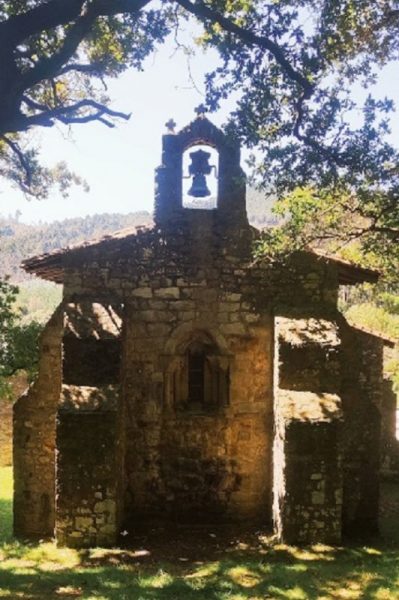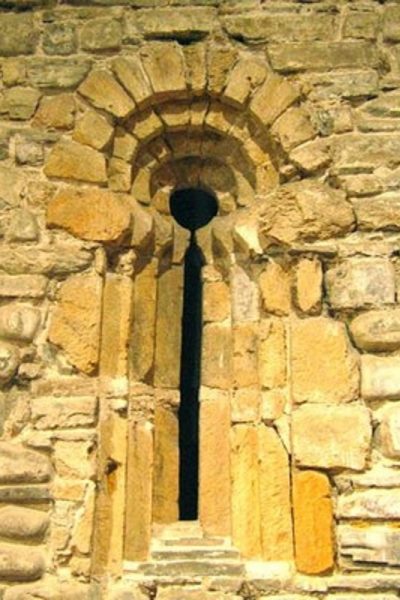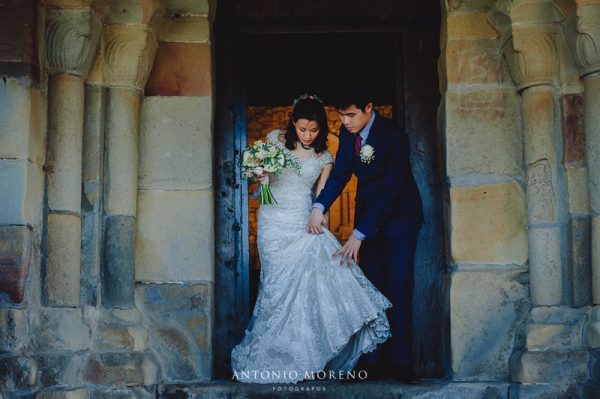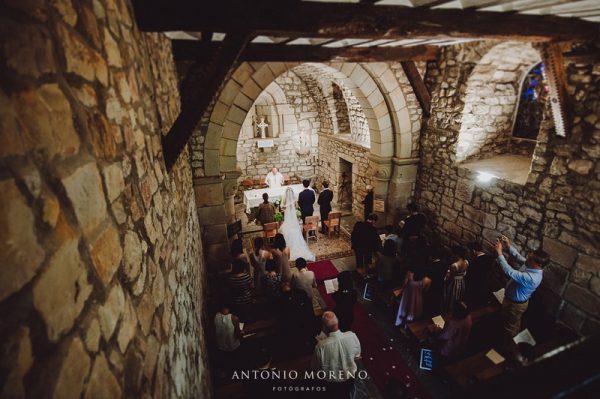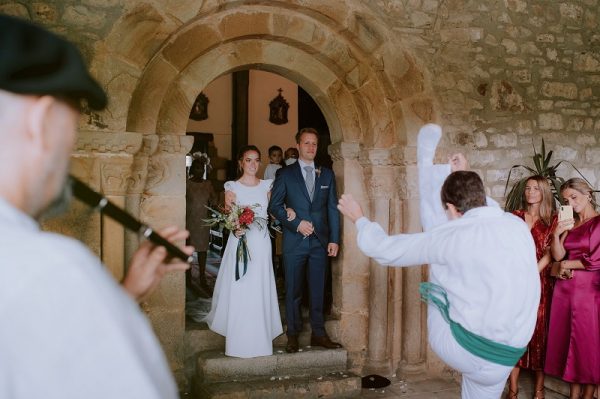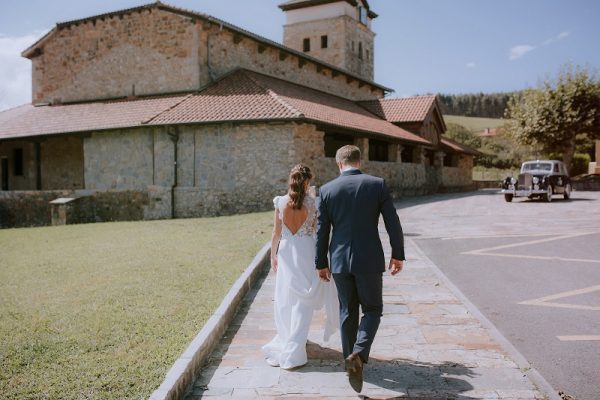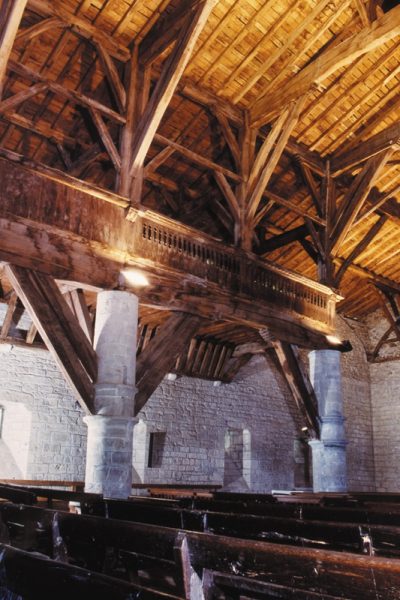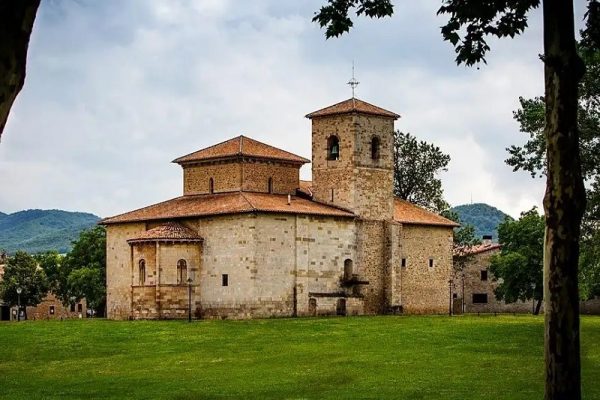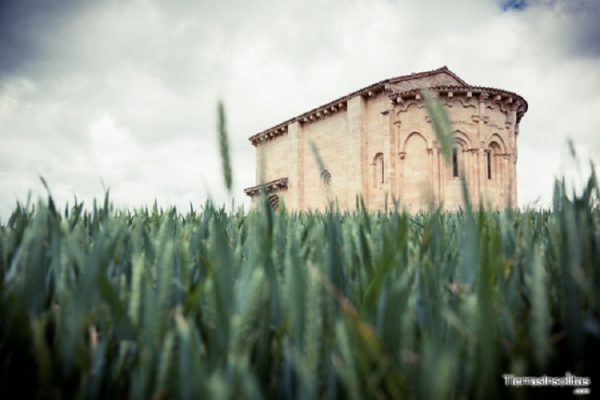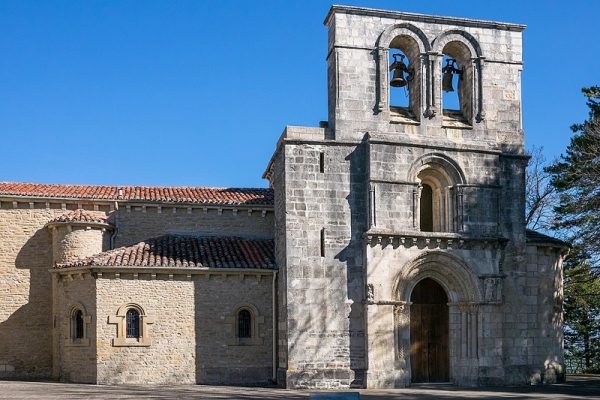If something has always fascinated me about the Middle Ages, it is its religious architecture. I am still amazed by the ingenuity of the masters in the construction of the great Gothic cathedrals such as the Cathedral of Burgos, the one in Ávila or the one in León (to give some nearby examples) with their ribbed vaults and the ingenuity of the buttresses. But, above all, I am fascinated by the Romanesque. The Romanesque is much more than an artistic style. It was a cultural phenomenon, a specific way of thinking, feeling and living that was built in Western Christianity throughout the 10th and 11th centuries.
As far as art is concerned, its architectural solutions draw attention: semicircular and flared arches and windows, the barrel vaults, the corbels, etc. That gave rise to simple and beautiful hermitages that are presented, from my point of view, as emblematic places to celebrate a religious ceremony.
Unfortunately, in the Basque Country, although they must have been very abundant, few reminiscences of that time are preserved. In Bizkaia, the small hermitage of San Pedro de Abrisketa, in Arrigorriaga, stands out; that of San Miguel de Zumetxaga, on the slopes of Mount Jata, an exponent of the late Romanesque in the Basque Country; or the one of San Andrés de Astigarribia, in Mutriku, which even preserves a pre-Romanesque window.
In Bakio we have San Pelayo, a hermitage from the 12th century that is practically intact. There Shauna and Khai Phang got married a few years ago, surrounded by their closest family and friends in a very intimate ceremony.
Another hermitage that was the spot of one of our weddings a few years ago, that of Miren and Koldo, was the hermitage of Andra Mari de Lemoiz (Santa María). It also dates from the 12th century and preserves some Romanesque elements such as its cover.
In Gipuzkoa there are hardly any visible remains of the Romanesque, only a few windows or columns in more modern churches. It does stand out, although from a later period, the hermitage of Santa María de la Antigua de Zumarraga, an example of late Basque Romanesque.
While the province of Álava has the largest representation of this style in the Basque Country. To cite just a few, we must highlight the Basilica of San Prudencio de Armentia, from the second half of the 12th century. Although it must have been a great exponent of the Romanesque, the temple was drastically reformed in the 18th century, its decorative and architectural elements from the 12th century being disrupted, in such a way that it can only be conjectured with some of its elements such as sculptures.
On the border between Álava and Burgos stands the small hermitage of Santa María de Tobera, from the 12th century, with its famous figural capitals. And, although it belongs to Burgos, in Treviño County, La Purísima Concepción de San Vicentejo (from the same century as the previous one) stands out for its impressive apse. And of course, we cannot forget the wonderful Monastery of Nuestra Señora de Estibaliz, in Vitoria, an authentic Romanesque jewel.
Although the truth is that the best Romanesque ensembles in Spain are concentrated in Castilla y León, La Rioja and Navarra as part of the Camino de Santiago, with plenty of hermitages, rural churches and other jewels that could be the perfect setting for your wedding ceremony. If you want to know more, soon we will dedicate another post. For now, we stay with the ones here. What do you think? Does the idea of celebrating your wedding in a Romanesque church appeal to you?


